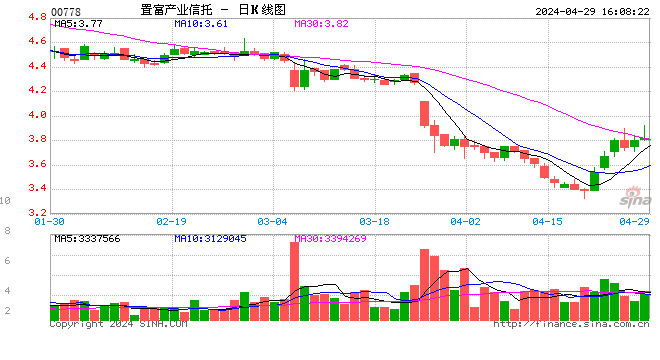新浪財經訊 4月25日消息,《中國日報》周三援引接近央行的消息人士稱,中國即將公布資產管理業務新規。作為降低中國金融體系風險舉措的一部分,市場一直在等待資產管理業務新規最終版本的發布。
《中國日報》中文翻譯:
據《中國日報》報導,中國推出更嚴格資產管理規定的倒計時已開始,可能在周末前啟動,這將限制銀行投資於高風險和短期融資工具,並進一步緩解金融脆弱性。
但有跡象表明,中國政策制定者對最終的放行持謹慎態度,原因是資產管理產品的激增,其中包括截至2017年銀行發行的價值約29.54兆元(大約4.68兆美元)理財產品。此外,據專家稱,任何不加強金融機構流動性和資本緩衝的不謹慎舉動,都可能無意中增加穩定風險。
一位與中國央行關係密切的匿名消息人士對《中國日報》表示:“在一些銀行進行遊說,並可能對擬議的監管規定進行修訂後,新規定最早可能於本周公布,趕在周日開始的‘五一’假日之前。”
他表示:“但我認為隨著規則生效,許多基本事項和細節需要在指引方面進一步澄清,包括重新評估標準信貸資產的規模,及其適當的價值評估方法。”
中國規模達250兆元的銀行系統、證券經紀商、基金公司、信託公司和保險公司都熱衷於交叉持有資產負債表外的投資工具,自全球金融危機以來,監管機構和投資者一直難以監控這些投資工具,從而推動了信貸繁榮,提高了杠杆率。
即將頒布的監管措施旨在限制高風險投資工具的杠杆水準和複雜性(根據國際貨幣基金組織(IMF)的數據,截至去年此類風險投資工具價值接近75兆元),並逐漸限制銀行為通常高於標準存款產品的固定收益回報提供隱含擔保的能力。
在更嚴格的監管約束下,中國貨幣市場利率今年已大幅上升,導致企業債券息差擴大,這意味著更高的風險溢價,特別是對較弱的借款人而言。
中信證券分析師明明(Ming Ming)表示,銀行融資管道的收縮以及與其他金融機構的業務相互關聯,可能會減緩信貸增長,同時提高企業融資成本。
他表示:“規模較小、分行網絡有限、吸引存款能力較弱的銀行將面臨更大壓力。”“但去杠杆化和風險控制仍將是金融監管機構未來幾個月的關鍵任務。”
為了緩解銀行不斷上升的流動性壓力,中國央行決定從周三開始定向降準1個百分點,相當於釋放1.3兆元的流動性。
中國央行還打算推進利率改革,包括進一步放開存款利率,這將允許銀行保留一些原本會流入其他金融產品的財富管理基金。
3月28日,新的監管指導方針獲得了國家最高決策者的批準。中國央行去年11月以準則草案的形式發布了統一的標準和明確的資產分類。
一些市場觀察人士猜測,近期全球金融市場的波動和中美貿易緊張將推遲該準則的發布,但一些地方媒體援引匿名高級官員的話稱,新規的推出仍將“按期進行”,可能會在5月初。
中國央行行長易綱上周日表示,“中國已經表明了進一步改革和開放的堅定決心”,儘管金融脆弱性的上升,貿易和地緣政治緊張局勢加劇和處於歷史高位的全球債務都可能威脅到全球增長前景。
《中國日報》英文原文如下:
Tighter asset management rules ‘days away’
By Chen Jia | China Daily
Policymakers cautious about giving go-ahead due to product proliferation
The final countdown for the debut of China‘s tightened asset management regulation has begun, with a possible launch by the weekend, which would restrict banks from investing in high-risk and short-term funding vehicles and further ease financial vulnerability, sources said.
But signals have shown that Chinese policymakers are cautious about giving the final go-ahead, due to the proliferation of asset management products that included around 29.54 trillion yuan ($4.68 trillion) of bank-issued wealth management products by 2017. In addition, any indiscreet move without strengthening financial institutions‘ liquidity and capital buffers could inadvertently raise stability risks, said experts.
“After some banks‘ lobbying and the possible revision of the proposed regulation, the new rules could be released as early as this week, before the May Day holiday starting on Sunday,” an anonymous source close to the central bank told China Daily.
“But I think with the regulation taking effect, many basic matters and details need to be further clarified in terms of guidelines, including reassessing the scale of standard credit assets and their appropriate value assessment methods,” he said.
The nation‘s 250-trillion-yuan banking system, securities brokers, fund companies, trust companies and insurers, were keen on cross-holding off-balance-sheet investment vehicles that have been difficult for regulators and investors to monitor since the global financial crisis, facilitating the credit boom and elevating leverage.
The upcoming regulation is aimed at limiting the leverage level and complexity of risky investment vehicles, valued at almost 75 trillion yuan by last year, according to the International Monetary Fund, and gradually restricting banks‘ ability to implicitly guarantee fixed-yield returns that are usually higher than standard deposit products.
Following tighter regulatory constraints, China‘s money market rates have risen sharply this year, leading to wider corporate bond spreads which indicate a higher risk premium, particularly for weaker borrowers.
Ming Ming, an analyst with CITIC Securities, said that the contraction of banks‘ funding channels and interconnected business with other financial institutions may moderate credit growth while raising corporate financing costs.
“Smaller banks with limited branch networks and a weaker ability to attract deposits will face greater pressure.
“But deleveraging and risk control will remain key tasks in the coming months for financial regulators,” he said.
To ease banks‘ rising liquidity pressure, the central bank decided to cut the amount of cash that financial institutions must hold on reserve starting from Wednesday by 1 percentage point, freeing 1.3 trillion yuan in total.
The central bank also intends to push forward interest rate reform, including further liberalizing deposit rates, which would allow banks to retain some wealth management funds that would have otherwise flowed into other financial products.
On March 28, the new regulatory guidelines were approved by the country‘s top policymakers. The unified standards and the clear classification of various asset products were released in the form of a draft guideline in November by the central bank.
Some market watchers speculated that the recent fluctuations in the global financial market and Sino-US trade tension would delay the debut of the guidelines, but some local media quoted anonymous senior officials as saying the launch is still “right on schedule”, possibly by the beginning of May.
Yi Gang, the central bank governor, said on Sunday that “China has demonstrated its firm determination on further reform and opening-up”, although rising financial vulnerability, increasing trade and geopolitical tensions, and historically high global debt could threaten global growth prospects.
責任編輯:楊群







